East London pavilion by Nonscale is designed to resemble a cluster of stars
This London pavilion, designed to resemble a smattering of stars, casts reflections on a mirrored plate to operate like a giant sundial (+ slideshow).
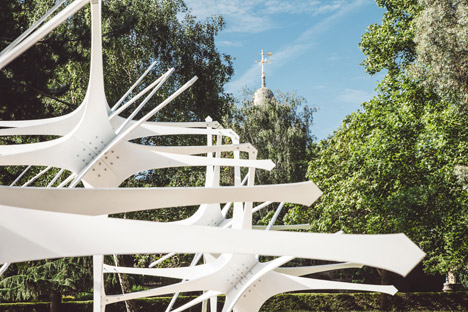
Tokyo-based architecture studio Nonscale Co designed the Sky Pavilion for a lawn in the Museum Gardens, a park neighbouring the V&A Museum of Childhood in Bethnal Green.
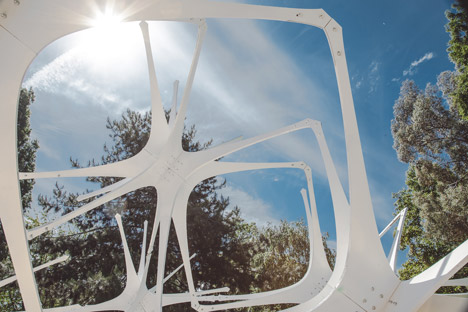
The studio won the annual Triumph Pavilion competition – set up in 2012 by competition organiser ArchTriumph to highlight the work of an individual architect or design team – to create the spiky pavilion.
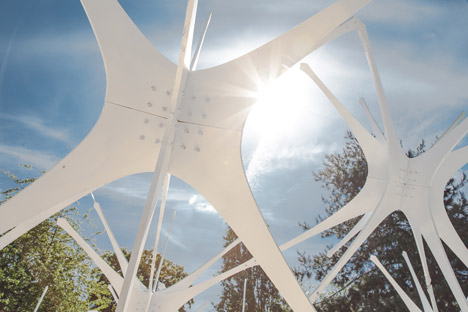
This year, applicants were asked to investigate how the sky changes the perception of architectural structures. Nonscale's winning entry was a giant sundial that takes the form of a collection of "twinkling" stars on a mirrored platform.
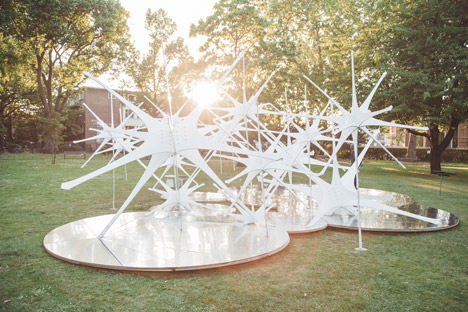
"The pavilion is constructed from 17 twinkling stars, which point towards the North Star," studio designer Masaki Morinobu told Dezeen. "The entire symbolic pavilion functions as a sundial."
"We designed the pavilion as a sundial, because we wanted to give the visitors a strong connection between the sky and the site, not only from its geometry but also from its function," added Morinobu. "People will experience and feel how we used to indicate time from the sky when there was less technology, and [when there was more] importance of astrology on our daily living."

Elongated spines that splay from the centre of the stars are designed as gnomons – the triangular blade used to cast a shadow on the base of a sundial and indicate the time.
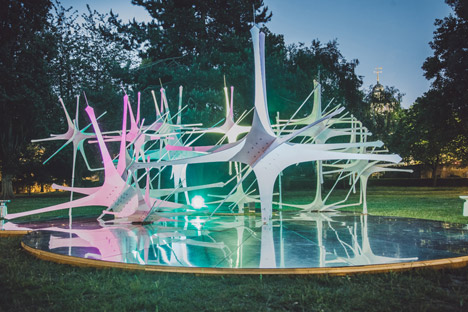
The structure is pinned to a series of interlocking circular mirrors marked with radiating lines. As the position of the sun changes throughout the day the reflections move across the markings to indicate the time.

"On each sundial platform, there are gnomons attached to the star units that point towards the north star," explained Morinobu. "These seven gnomons create shadows on the platform indicating the time from the sky."

In all, 17 small and large laser-cut stars join to form the structure, which is supported by a solid steel core and anchored to the ground.
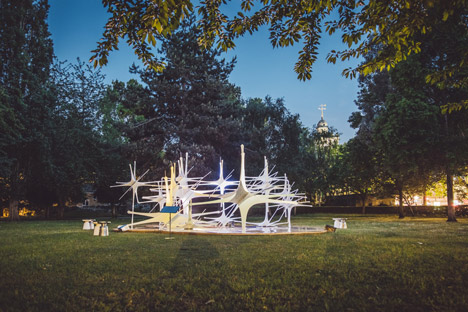
The four-metre-tall structure is made from a stainless steel composite and weighs over 2,000 kilograms.
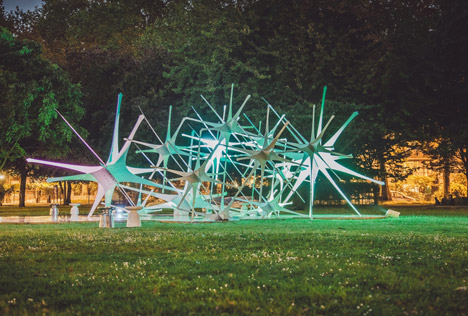
Coloured floodlights illuminate the Sky Pavilion after dark when it can no longer operate as a sundial.
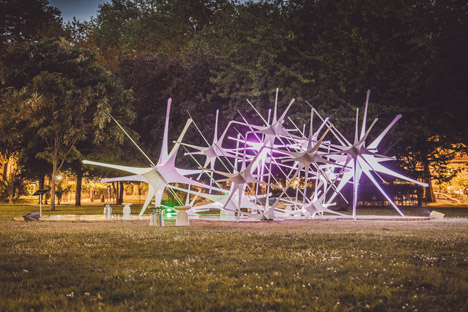
Last year's pavilion was a rib-shaped structure designed by London studio IPT Architects, while in 2013 an inflatable and tubular canopy by Paris architects Atelier Zündel Cristea won the commission.
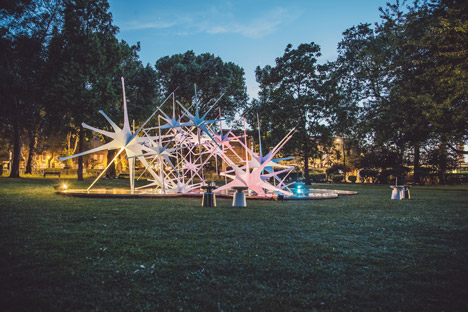
The pavilion's opening coincides with the London Festival of Architecture, a series of architecture-themed installations, temporary exhibitions and events that runs throughout the month of June. The pavilion will be in situ until 29 June.
Photography is courtesy of Nonscale Co.
Project credits:
Design: Nonscale Co.
Principle architect: Masaki Morinobu
Contractor: Koichi Yamano
Project cordination & management: ArchTriumph
Project curator: K B Stowe
Structural engineering: Ejiri Structural Engineers
Principle engineer: Norihiro Ejiri
Project engineer: Haruhide Kusumoto
UK Engineering Advisory: Structure Workshop
UK Architectural Advisory: D N Izoulet
Laser cutting: Taiyo Kogyo and Cut and Construct
Anchoring: SpiraFix
Steelwork: Suslight Industry Co.